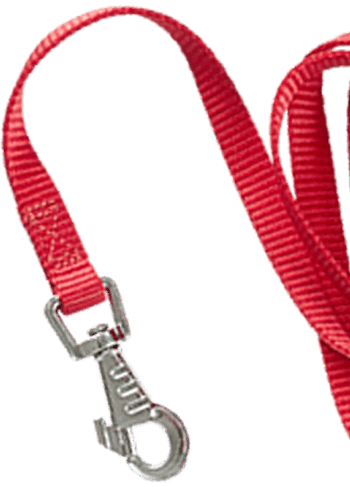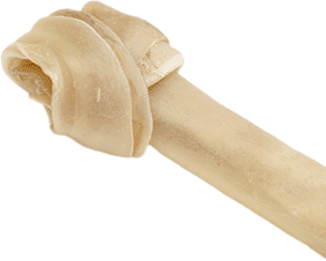


Ah, summer, the perfect time to get outside with your Labrador and go for long walks and brisk runs. Depending on where you live in the United States, there’s a point in the season where pleasant breezes turn into humid days and these extreme temperatures could endanger your Labrador Retriever.
In 2020 alone, PETA found that 31 pets died after being left by their owners in a car on a hot day — that they knew about. The highest number occurred in El Paso, Texas, where even the winters can be warm.
Lab owners, in particular, need to understand which temperatures are cold for labradors and which conditions can spike their body heat in a dangerous way.
This can help you ensure that your lab dog is always safe from extreme heat and cold and that you’re helping your dogs naturally regulate their body temperature.
Of course, the registered by PETA were incidents where animals died. However, it doesn’t account for how many animals are suffering due to high temperatures.
Now, you might already know not to keep your dog in such dire weather conditions, but what are the ideal temperatures for a pet?
For most dog owners, their pet is a family member. They wouldn’t dream of subjecting them to cold weather or periods of extreme heat.
However, the fact remains that, in the United States, our summers are becoming increasingly warm. Due to climate change, eight of the ten warmest years on record have occurred so far since 1998.
So even if you don’t intend it, your lab could be uncomfortable without you knowing. The climate crisis means owners must be vigilant about indoor and outdoor temperatures.
Most vets agree that when the Mercury soars above 90 degrees Fahrenheit, it’s time to bring your Labrador inside. This is a matter of life and death.
These days there’s no excuse not to know whether it’s too hot. We all have access to weather apps on our smartphones that can allow us to track the temperature in real-time.
But it’s not just the temperature you have to worry about. It’s the humidity.
Humidity plays a significant role in how hot a Labrador pup can get. This is because of the unique way dogs take heat away from their body. Higher humidity levels can interfere with that natural process.
As Dr. Barry Kellogg of the Humane Society Veterinary Medical Association explains, “Animals pant to evaporate moisture from their lungs, which takes heat away from their body. If the humidity is too high, they are unable to cool themselves and their temperature will skyrocket to dangerous levels.”
Generally, 20% to 30% humidity is already too hot for Labradors, or dogs in general, to function properly. At this point, it’s best to take them inside.
The average body temperature of a dog falls somewhere between 100.5 and 102.5 degrees Fahrenheit. In a hot car, their body temperatures can reach 109 degrees Fahrenheit, which can damage their circulatory systems and organs.
When driving, turn the air-conditioning on and open windows on both sides. Although it will still be hot, the airflow can help keep your Labrador cool. It can also help counter the humidity.
And, finally, if you’re on a particularly long car journey, plan a few water breaks. If you can, drive by a lake and allow the water temperature to cool down your dog.
Sometimes, even ideal conditions can make labs uncomfortable. Assuming you’re still within the range of the ideal temperature for a Labrador, look out for the signs of incoming heat stroke or other heat-related issues that could plague your dog’s body.
Many dogs who aren’t used to the heat often display changes in behavior. A study showed that the number of hospitalizations for dog bites in Beijing increased during the year’s hottest months.
Like humans, dogs tend to change when they’re experiencing undesirable temperatures.
According to the American Society for the Prevention of Cruelty to Animals the most common signs of overheating in your family pet include:
More extreme health issues that you could see in your pooch include seizures and collapsing. Whether isolated or in combination, any of these changes are a cause for concern. You’ll need to take action to cool your Labrador’s temperature down.
Dog owners can do a lot to help their labradors stay nice and cool in balmy conditions, even once the symptoms of extreme temperatures start to show up.
Follow these steps to save your four-legged friend if they show any symptoms of heatstroke:
Besides these action steps, you may also benefit from installing a dog house with a kennel cover in your backyard. This will cool temperatures for your Lab during extreme temperatures.
Dogs aren’t like us. They can’t just grab a cold soda or switch on the air-conditioning when temperatures reach record highs. Dogs also can’t tell us that they’re suffering in the heat.
You need to take action to make sure your dog never reaches the point of impending heatstroke:
You may not be able to control the external temperatures for your lab, but you can take action and protect them from hot and humid weather.
Dogs will always crave more water during the summer, just as every human does. Your dog will only drink when they’re thirsty, so you don’t need to worry too much about overhydration.
As a general rule of thumb, your dog needs an ounce of water per pound of body weight per day.
Obviously, during the summer, your dog will sweat more, and so they’ll drink more. You don’t need to do anything special. Just make sure they have at least twice their usual amount available.
Unfortunately, Labrador shaving has become a trend among pet owners because of the patterns and styles that can be shaved into them. But this is what many knowledgeable pet owners consider to be animal abuse.
Besides this, many dog owners miss this bit of knowledge and then end up making things worse. They think that a dog’s fur layers are the reason why they’re hot. However, Labradors are a type of breed that has a double fur coat.
The double coact means Labradors have an undercoat that is soft and downy. It keeps a dog warm during the winter and cool during the summer.
The topcoat is rougher to the touch. The second layer is the undercoat and is much softer. This coat is very close to the skin. Both coats are an extension to the dog’s skin.
The undercoat forms a type of protection for the dog. If you shave your Labrador, you take away essential protection.
Whenever the ideal temperature for a Labrador is reached, your dog reacts by raising or lowering its hair. It’s a form of natural ventilation.
Here’s the sad truth: When you shave your Labrador, you’re destroying their natural ventilation system. Shaving your labrador can have the reverse effect because the fur that grows back will be rough, not soft. Your Labrador will end up feeling itchy and more uncomfortable.
It’s just as frustrating for adult labs as it is for you when it’s too hot to go for walks. During July and August, you have to work with what you have.
Here are a few ideas for alternatives people can use to protect your Labrador’s health:
The Labrador remains the most popular breed in the country. Like most dog breeds, Labradors struggle to cope in the summer.
The ideal temperature for a Labrador is below 90 degrees Fahrenheit and less than 20-30% humidity. Keep them hydrated and watch for any signs of heatstroke.
Staying alert and staying ready ensures you and your Labrador can create some golden memories this coming summer.
Get in touch with Snowy Pines White Labs to find out more about what you can do to enhance your lab’s life.